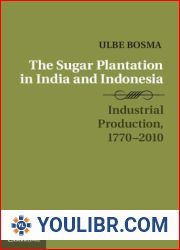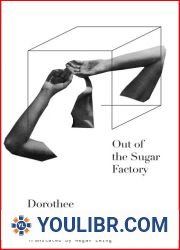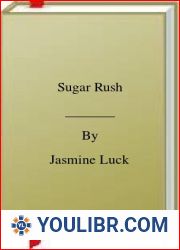
BOOKS - The Sugar Plantation in India and Indonesia: Industrial Production, 1770-2010...

The Sugar Plantation in India and Indonesia: Industrial Production, 1770-2010 (Studies in Comparative World History)
Author: Ulbe Bosma
Year: January 1, 2013
Format: PDF
File size: PDF 7.7 MB
Language: English

Year: January 1, 2013
Format: PDF
File size: PDF 7.7 MB
Language: English

The Sugar Plantation in India and Indonesia: An Industrial Production Study In the late 18th century, European markets were almost entirely dependent on Caribbean sugar produced by slave labor. However, as abolitionist movements gained momentum in the early 19th century, the search for alternative sources of sugar production began. The British and Dutch turned their attention to Asia, introducing the sugar plantation model in India and Indonesia. This book, "The Sugar Plantation in India and Indonesia: Industrial Production, 17702-2010" by Ulbe Bosma, examines how these colonial powers refashioned the sugar industry over time, leading to both successes and failures. Initially, the British attempted to establish sugar plantations in India, but these efforts ultimately failed. In contrast, the Dutch colonial administration in Java was more successful, introducing a system of forced cultivation that tied local peasant production to industrial manufacturing in 1830. This model was later adopted by India, combining it with farmers' cooperatives rather than employing coercive measures.
Сахарная плантация в Индии и Индонезии: исследование промышленного производства В конце XVIII века европейские рынки почти полностью зависели от карибского сахара, производимого рабским трудом. Однако по мере того, как аболиционистские движения набирали обороты в начале XIX века, начался поиск альтернативных источников производства сахара. Англичане и голландцы обратили внимание на Азию, внедрив модель сахарных плантаций в Индии и Индонезии. В этой книге Ульбе Босма «Сахарная плантация в Индии и Индонезии: промышленное производство» («The Sugar Plantation in India and Indonesia: Industrial Production, 17702-2010») рассматривается, как эти колониальные державы со временем восстановили сахарную промышленность, что привело как к успехам, так и к неудачам. Первоначально британцы пытались основать сахарные плантации в Индии, но эти усилия в конечном итоге потерпели неудачу. Напротив, голландская колониальная администрация на Яве была более успешной, внедрив систему принудительного выращивания, которая привязала местное крестьянское производство к промышленному в 1830 году. Позже эта модель была принята Индией, объединив её с фермерскими кооперативами, а не применяя принудительные меры.
Plantation de sucre en Inde et en Indonésie : étude de la production industrielle À la fin du XVIIIe siècle, les marchés européens dépendaient presque entièrement du sucre des Caraïbes produit par le travail des esclaves. Cependant, alors que les mouvements abolitionnistes prenaient de l'ampleur au début du XIXe siècle, la recherche de sources alternatives de production de sucre commença. s Anglais et les Hollandais ont attiré l'attention sur l'Asie en introduisant un modèle de plantations de sucre en Inde et en Indonésie. Ce livre d'Ulbe Bosma intitulé « Sugar Plantation in India and Indonesia : Industrial Production, 17702-2010 » examine comment ces puissances coloniales ont récupéré l'industrie sucrière au fil du temps, ce qui a entraîné des succès et des échecs. Dans un premier temps, les Britanniques ont essayé d'établir des plantations de sucre en Inde, mais ces efforts ont finalement échoué. Au contraire, l'administration coloniale néerlandaise à Java a eu plus de succès en introduisant un système de culture forcée qui a attaché la production paysanne locale à l'industrie en 1830. Plus tard, ce modèle a été adopté par l'Inde, en le fusionnant avec les coopératives agricoles, plutôt que d'appliquer des mesures coercitives.
Plantación de azúcar en India e Indonesia: un estudio de la producción industrial A finales del siglo XVIII, los mercados europeos dependían casi por completo del azúcar caribeño producido por el trabajo esclavo. n embargo, a medida que los movimientos abolicionistas cobraban impulso a principios del siglo XIX, comenzó la búsqueda de fuentes alternativas para la producción de azúcar. británicos y los holandeses prestaron atención a Asia mediante la introducción de un modelo de plantaciones de azúcar en India e Indonesia. En este libro de Ulbe Bosma, «La plantación azucarera en India e Indonesia: la producción industrial» («The Sugar Plantation in India and Indonesia: Industrial Production, 17702-2010»), se examina cómo estas potencias coloniales han recuperado la industria azucarera con el tiempo, lo que ha dado lugar tanto a éxitos como a fracasos. Inicialmente, los británicos intentaron establecer plantaciones de azúcar en la India, pero estos esfuerzos finalmente fracasaron. Por el contrario, la administración colonial holandesa en Java tuvo más éxito al implementar un sistema de cultivo forzado que vinculó la producción campesina local a la industrial en 1830. Este modelo fue adoptado más tarde por la India, combinándolo con cooperativas de agricultores en lugar de aplicar medidas coercitivas.
Zuckerplantage in Indien und Indonesien: Eine Studie zur Industrieproduktion Ende des 18. Jahrhunderts waren die europäischen Märkte fast vollständig von karibischem Zucker abhängig, der durch Sklavenarbeit produziert wurde. Als jedoch die abolitionistischen Bewegungen zu Beginn des 19. Jahrhunderts an Dynamik gewannen, begann die Suche nach alternativen Quellen für die Zuckerproduktion. Die Engländer und Holländer richteten ihre Aufmerksamkeit auf Asien, indem sie das Modell der Zuckerplantagen in Indien und Indonesien einführten. Dieses Buch von Ulbe Bosma, The Sugar Plantation in India and Indonesia: Industrial Production, 17702-2010, untersucht, wie diese Kolonialmächte im Laufe der Zeit die Zuckerindustrie wieder aufgebaut haben, was zu Erfolgen und Misserfolgen führte. Ursprünglich versuchten die Briten, Zuckerplantagen in Indien zu gründen, aber diese Bemühungen scheiterten schließlich. Im Gegensatz dazu war die niederländische Kolonialverwaltung auf Java erfolgreicher, indem sie ein Zwangsanbausystem einführte, das die lokale Bauernproduktion 1830 an die industrielle Produktion knüpfte. Dieses Modell wurde später von Indien übernommen, indem es mit landwirtschaftlichen Genossenschaften kombiniert wurde, anstatt Zwangsmaßnahmen anzuwenden.
''
Hindistan ve Endonezya'daki şeker plantasyonu: Endüstriyel üretim üzerine bir çalışma 18. yüzyılın sonunda, Avrupa pazarları neredeyse tamamen köle emeği tarafından üretilen Karayip şekerine bağlıydı. Bununla birlikte, kölelik karşıtı hareketler 19. yüzyılın başlarında ivme kazandıkça, alternatif şeker üretim kaynakları arayışı başladı. İngilizler ve Hollandalılar dikkatlerini Asya'ya çevirdiler, Hindistan ve Endonezya'da bir şeker plantasyonları modeli tanıttılar. Ulbe Bosma'nın The Sugar Plantation in India and Indonesia: Industrial Production, 17702-2010 (Hindistan ve Endonezya'da Şeker Plantasyonu: Endüstriyel Üretim) adlı kitabı, bu sömürgeci güçlerin şeker endüstrisini nasıl yeniden inşa ettiklerini ve hem başarıya hem de başarısızlığa yol açtıklarını inceliyor. Başlangıçta, İngilizler Hindistan'da şeker tarlaları kurmaya çalıştı, ancak bu çabalar sonuçta başarısız oldu. Buna karşılık, Java'daki Hollanda sömürge yönetimi, 1830'da yerel köylü üretimini sanayi üretimine bağlayan bir zorla yetiştirme sistemi uygulayarak daha başarılı oldu. Daha sonra bu model Hindistan tarafından benimsendi, çiftçi kooperatifleriyle birleştirildi ve zorlayıcı önlemler kullanılmadı.
مزرعة السكر في الهند وإندونيسيا: دراسة عن الإنتاج الصناعي في نهاية القرن الثامن عشر، كانت الأسواق الأوروبية تعتمد بشكل كامل تقريبًا على السكر الكاريبي الذي تنتجه عمالة العبيد. ومع ذلك، مع اكتساب الحركات التي ألغت عقوبة الإعدام زخمًا في أوائل القرن التاسع عشر، بدأ البحث عن مصادر بديلة لإنتاج السكر. حوّل البريطانيون والهولنديون انتباههم إلى آسيا، وقدموا نموذجًا لمزارع السكر في الهند وإندونيسيا. يدرس هذا الكتاب، The Sugar Plantation in India and Indonesia: Industrial Production، 17702-2010 بقلم أولبي بوسما، كيف أعادت هذه القوى الاستعمارية في النهاية بناء صناعة السكر، مما أدى إلى النجاح والفشل. في البداية، حاول البريطانيون إنشاء مزارع للسكر في الهند، لكن هذه الجهود فشلت في النهاية. في المقابل، كانت الإدارة الاستعمارية الهولندية في جاوة أكثر نجاحًا، حيث نفذت نظامًا للزراعة القسرية ربط إنتاج الفلاحين المحليين بالإنتاج الصناعي في عام 1830. في وقت لاحق، اعتمدت الهند هذا النموذج، ودمجته مع تعاونيات المزارعين، وعدم استخدام التدابير القسرية.








 49
49  2 TON
2 TON








































